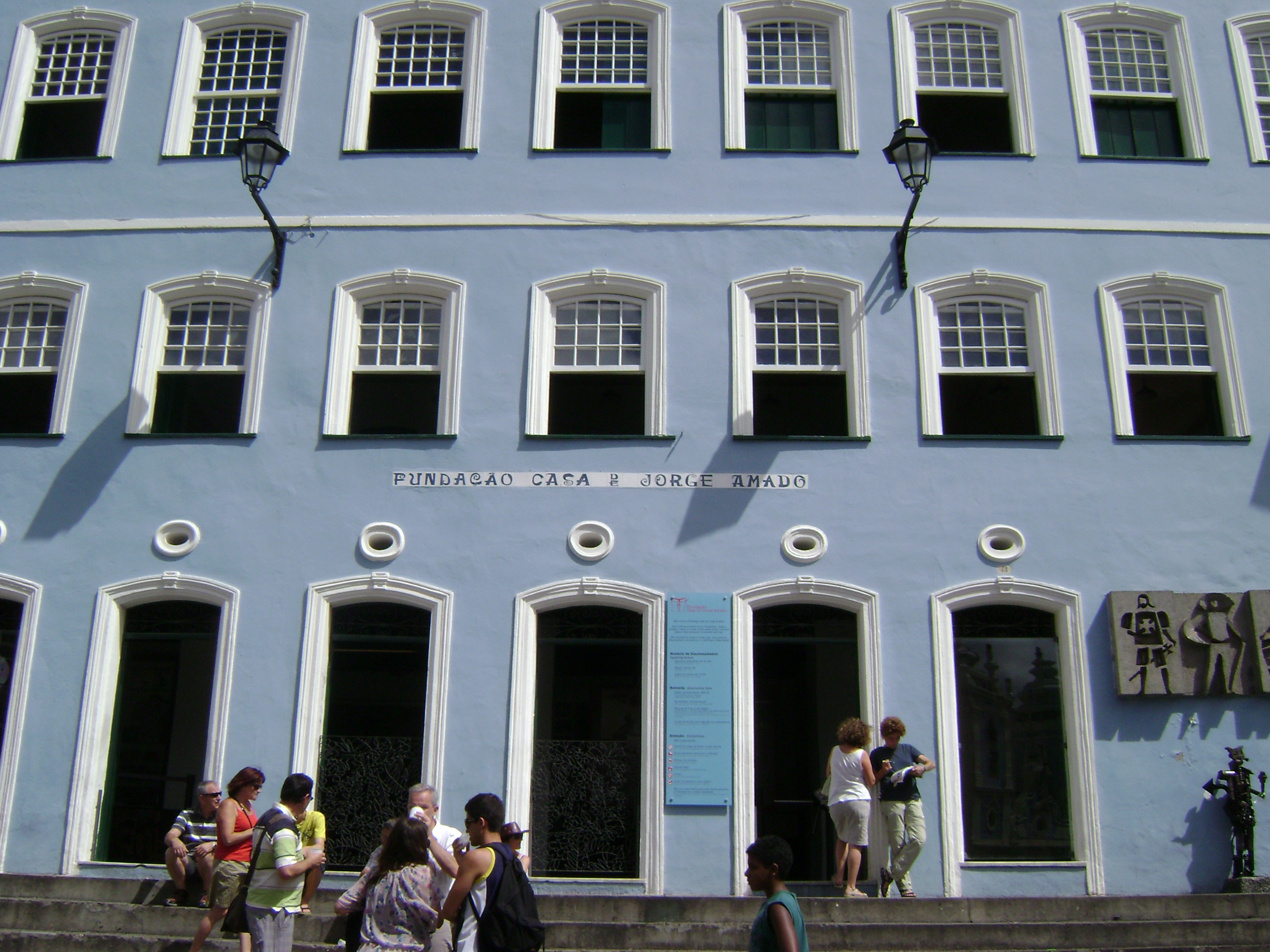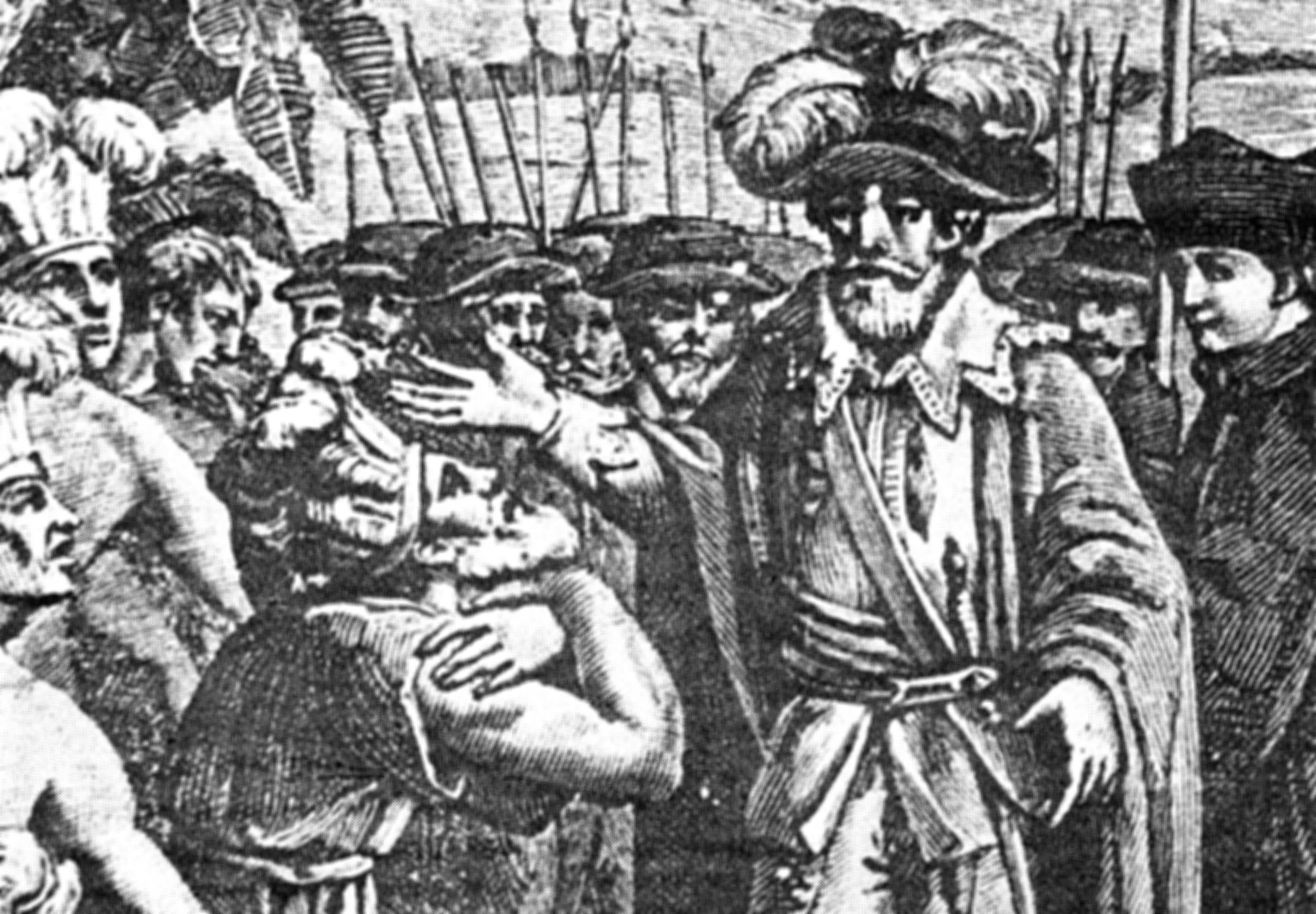|
The War Of The Saints
''The War of the Saints'' (Portuguese: ''O Sumiço da Santa'') is a Brazilian Modernist novel by Jorge Amado first published in 1988. An English translation by Gregory Rabassa appeared in 1993. The novel The novel, which takes place within a period of 48 hours, centers around Dom Maximiliano von Gruden, Director of the Museum of Sacred Art in Salvador, Bahia in Brazil. Von Gruden curates a show of Bahian religious art, the centerpiece of which is planned to be a statue of Saint Barbara of the Thunder, reluctantly loaned by the church of Santo Amaro da Purificação in the Bahian town of Santo Amaro. However, as the sloop on which it is being transported docks in Salvador, the statue gets up and walks off the ship. Chaotic efforts to find her come to nothing. Santa Barbara, or her Yoruban spirit entity, Yansan, has her own agenda, freeing a young girl from the nunnery where she has been confined by her aunt. The events over the two days often confuse fact and myth, with Braz ... [...More Info...] [...Related Items...] OR: [Wikipedia] [Google] [Baidu] |
Gregory Rabassa
Gregory Rabassa, Order of Merit (Portugal), ComM (March 9, 1922 – June 13, 2016), was an American literature, literary translation, translator from Spanish and Portuguese to English. He taught for many years at Columbia University and Queens College. Life and career Rabassa was born in Yonkers, New York, to a family headed by a Cuban émigré. After serving during World War II as an Office of Strategic Services, OSS cryptographer, he received a bachelor's degree from Dartmouth College, Dartmouth. He earned his doctorate at Columbia University and taught there for over two decades before accepting a position at Queens College, City University of New York. Rabassa translated literature from Spanish language, Spanish and Portuguese language, Portuguese. He produced English-language versions of the works of several major Latin American novelists, including Julio Cortázar, Jorge Amado and Gabriel García Márquez. On the advice of Cortázar, García Márquez waited three years for ... [...More Info...] [...Related Items...] OR: [Wikipedia] [Google] [Baidu] |
Yoruba People
The Yoruba people (, , ) are a West African ethnic group that mainly inhabit parts of Nigeria, Benin, and Togo. The areas of these countries primarily inhabited by Yoruba are often collectively referred to as Yorubaland. The Yoruba constitute more than 42 million people in Africa, are a few hundred thousand outside the continent, and bear further representation among members of the African diaspora. The vast majority of the Yoruba population is today within the country of Nigeria, where they make up 21% of the country's population according to CIA estimations, making them one of the largest List of ethnic groups of Africa, ethnic groups in Africa. Most Yoruba people speak the Yoruba language, which is the Niger–Congo languages, Niger-Congo language with the largest number of native or L1 speakers. In Africa, the Yoruba are contiguous with the Yoruboid languages, Yoruboid Itsekiri to the south-east in the northwest Niger Delta, Bariba people, Bariba to the northwest in Benin a ... [...More Info...] [...Related Items...] OR: [Wikipedia] [Google] [Baidu] |
1988 Novels
File:1988 Events Collage.png, From left, clockwise: The oil platform Piper Alpha explodes and collapses in the North Sea, killing 165 workers; The USS Vincennes (CG-49) mistakenly shoots down Iran Air Flight 655; Australia celebrates its Bicentennial on January 26; The 1988 Summer Olympics are held in Seoul, South Korea; Soviet troops begin their withdrawal from Afghanistan, which is completed the next year; The 1988 Armenian earthquake kills between 25,000-50,000 people; The 8888 Uprising in Myanmar, led by students, protests the Burma Socialist Programme Party; A bomb explodes on Pan Am Flight 103, causing the plane to crash down on the town of Lockerbie, Scotland- the event kills 270 people., 300x300px, thumb rect 0 0 200 200 Piper Alpha rect 200 0 400 200 Iran Air Flight 655 rect 400 0 600 200 Australian Bicentenary rect 0 200 300 400 Pan Am Flight 103 rect 300 200 600 400 1988 Summer Olympics rect 0 400 200 600 8888 Uprising rect 200 400 400 600 1988 Armenian earthquake rect 400 ... [...More Info...] [...Related Items...] OR: [Wikipedia] [Google] [Baidu] |
Syncretism
Syncretism () is the practice of combining different beliefs and various school of thought, schools of thought. Syncretism involves the merging or religious assimilation, assimilation of several originally discrete traditions, especially in the theology and mythology of religion, thus asserting an underlying unity and allowing for an Inclusivism, inclusive approach to other faiths. Syncretism also occurs commonly in expressions of art and culture, known as eclecticism, as well as in politics, known as syncretic politics. Nomenclature The English word is first attested in the early 17th century, from New Latin, Modern Latin , drawing on Ancient Greek, Greek grc, :wikt:συγκρητισμός, συγκρητισμός, synkretismos, labels=none, supposedly meaning "Cretan federation", but this is a spurious etymology from the naive idea in Plutarch's 1st-century AD essay on "Fraternal Love (Peri Philadelphias)" in his collection ''Moralia''. He cites the example of the Histor ... [...More Info...] [...Related Items...] OR: [Wikipedia] [Google] [Baidu] |
Bahia
Bahia ( , , ; meaning "bay") is one of the 26 Federative units of Brazil, states of Brazil, located in the Northeast Region, Brazil, Northeast Region of the country. It is the fourth-largest Brazilian state by population (after São Paulo (state), São Paulo, Minas Gerais, and Rio de Janeiro (state), Rio de Janeiro) and the 5th-largest by area. Bahia's capital is the city of Salvador, Bahia, Salvador (formerly known as "Cidade do São Salvador da Bahia de Todos os Santos", literally "City of the Saint Savior of the Bay of All the Saints"), on a Spit (landform), spit of land separating the Bay of All Saints from the Atlantic. Once a monarchial stronghold dominated by Agriculture in Brazil, agricultural, Slavery in Brazil, slaving, and ranching interests, Bahia is now a predominantly Working class, working-class industrial and agricultural state. The state is home to 7% of the Brazilian population and produces 4.2% of the country's GDP. Name The name of the state derives from the ... [...More Info...] [...Related Items...] OR: [Wikipedia] [Google] [Baidu] |
Magical Realism , a Japanese entertainment company
{{Disambig ...
Magical is the adjective for magic. It may also refer to: * Magical (horse) (foaled 2015), Irish Thoroughbred racehorse * "Magical" (song), released in 1985 by John Parr * '' Magical: Disney's New Nighttime Spectacular of Magical Celebrations'', a 2009–2014 summer fireworks show at Disneyland * Magical Company , also known as Mahō, is a Japanese entertainment company. History Established in Kobe in 1983 to design and develop video games, the company was incorporated on May 29, 1985 as Home Data. During the 80's they developed and published various ... [...More Info...] [...Related Items...] OR: [Wikipedia] [Google] [Baidu] |
Caetano Veloso
Caetano Emanuel Viana Teles Veloso (; born 7 August 1942) is a Brazilian composer, singer, guitarist, writer, and political activist. Veloso first became known for his participation in the Brazilian musical movement Tropicalismo, which encompassed theatre, poetry and music in the 1960s, at the beginning of the Brazilian military dictatorship that took power in 1964. He has remained a constant creative influence and best-selling performing artist and composer ever since. Veloso has won nine Latin Grammy Awards and two Grammy Awards. On November 14, 2012, Veloso was honored as the Latin Recording Academy Person of the Year. Veloso was one of seven children born into the family of José Telles Velloso (commonly known as ''Seu Zeca''), a government official, and Claudionor Viana Telles Veloso (known as ''Dona Canô''). He was born in the city of Santo Amaro da Purificação, in Bahia, a state in the eastern area of Brazil, but moved to Salvador, the state capital, as a college ... [...More Info...] [...Related Items...] OR: [Wikipedia] [Google] [Baidu] |
Sloop
A sloop is a sailboat with a single mast typically having only one headsail in front of the mast and one mainsail aft of (behind) the mast. Such an arrangement is called a fore-and-aft rig, and can be rigged as a Bermuda rig with triangular sails fore and aft, or as a gaff-rig with triangular foresail(s) and a gaff rigged mainsail. Sailboats can be classified according to type of rig, and so a sailboat may be a sloop, catboat, cutter, ketch, yawl, or schooner. A sloop usually has only one headsail, although an exception is the Friendship sloop, which is usually gaff-rigged with a bowsprit and multiple headsails. If the vessel has two or more headsails, the term cutter may be used, especially if the mast is stepped further towards the back of the boat. When going before the wind, a sloop may carry a square-rigged topsail which will be hung from a topsail yard and be supported from below by a crossjack. This sail often has a large hollow foot, and this foot is sometimes fil ... [...More Info...] [...Related Items...] OR: [Wikipedia] [Google] [Baidu] |
Jorge Amado
Jorge Leal Amado de Faria (10 August 1912 – 6 August 2001) was a Brazilian writer of the modernist school. He remains the best known of modern Brazilian writers, with his work having been translated into some 49 languages and popularized in film, notably ''Dona Flor and Her Two Husbands (novel), Dona Flor and Her Two Husbands'' in 1976. His work reflects the image of a Mestiço Brazil and is marked by religious syncretism. He depicted a cheerful and optimistic country that was beset, at the same time, with deep social and economic differences. He occupied the 23rd chair of the Brazilian Academy of Letters from 1961 until his death in 2001. He won the 1984 Nonino#Winners, International Nonino Prize in Italy. He also was Chamber of Deputies (Brazil), Federal Deputy for São Paulo (state), São Paulo as a member of the Brazilian Communist Party between 1947 and 1951. Biography Amado was born on Saturday, 10 August 1912, on a farm near the inland city of Itabuna, in the south o ... [...More Info...] [...Related Items...] OR: [Wikipedia] [Google] [Baidu] |
Santo Amaro, Bahia
Santo Amaro, also known as Santo Amaro da Purificação (), is a Municipalities of Brazil, municipality in the state of Bahia in Brazil. The population is 60,131 (2020 est.) in an area of . It is located in the metropolitan area of Salvador. Santo Amaro is located approximately from the city of Salvador, Bahia, Salvador. Santo Amaro was home to numerous indigenous peoples until the arrival of the Portuguese, who developed the region for sugarcane production. Santo Amaro is now noted for its numerous historic structures. The city is also a center of Candomblé, having more than 60 ''terreiros'', or temples of the religion. History Santo Amaro was home to Caeté people, Caeté, Potiguara, Pitiguaras, and Carijós peoples prior to the Colonial Brazil, Portuguese colonization of Brazil. The region became an early center of sugarcane production under the Portuguese, with settlements primarily along the Subaé River. It, along with Cachoeira and Nazaré, became early regional urban and ... [...More Info...] [...Related Items...] OR: [Wikipedia] [Google] [Baidu] |
Salvador, Bahia
Salvador (English: ''Savior'') is a Brazilian municipality and capital city of the state of Bahia. Situated in the Zona da Mata in the Northeast Region of Brazil, Salvador is recognized throughout the country and internationally for its cuisine, music and architecture. The African influence in many cultural aspects of the city makes it a center of Afro-Brazilian culture. As the first capital of Colonial Brazil, the city is one of the oldest in the Americas and one of the first planned cities in the world, having been established during the Renaissance period. Its foundation in 1549 by Tomé de Sousa took place on account of the implementation of the General Government of Brazil by the Portuguese Empire. Centralization as a capital, along with Portuguese colonization, were important factors in shaping the profile of the municipality, as were certain geographic characteristics. The construction of the city followed the uneven topography, initially with the formation of two leve ... [...More Info...] [...Related Items...] OR: [Wikipedia] [Google] [Baidu] |





